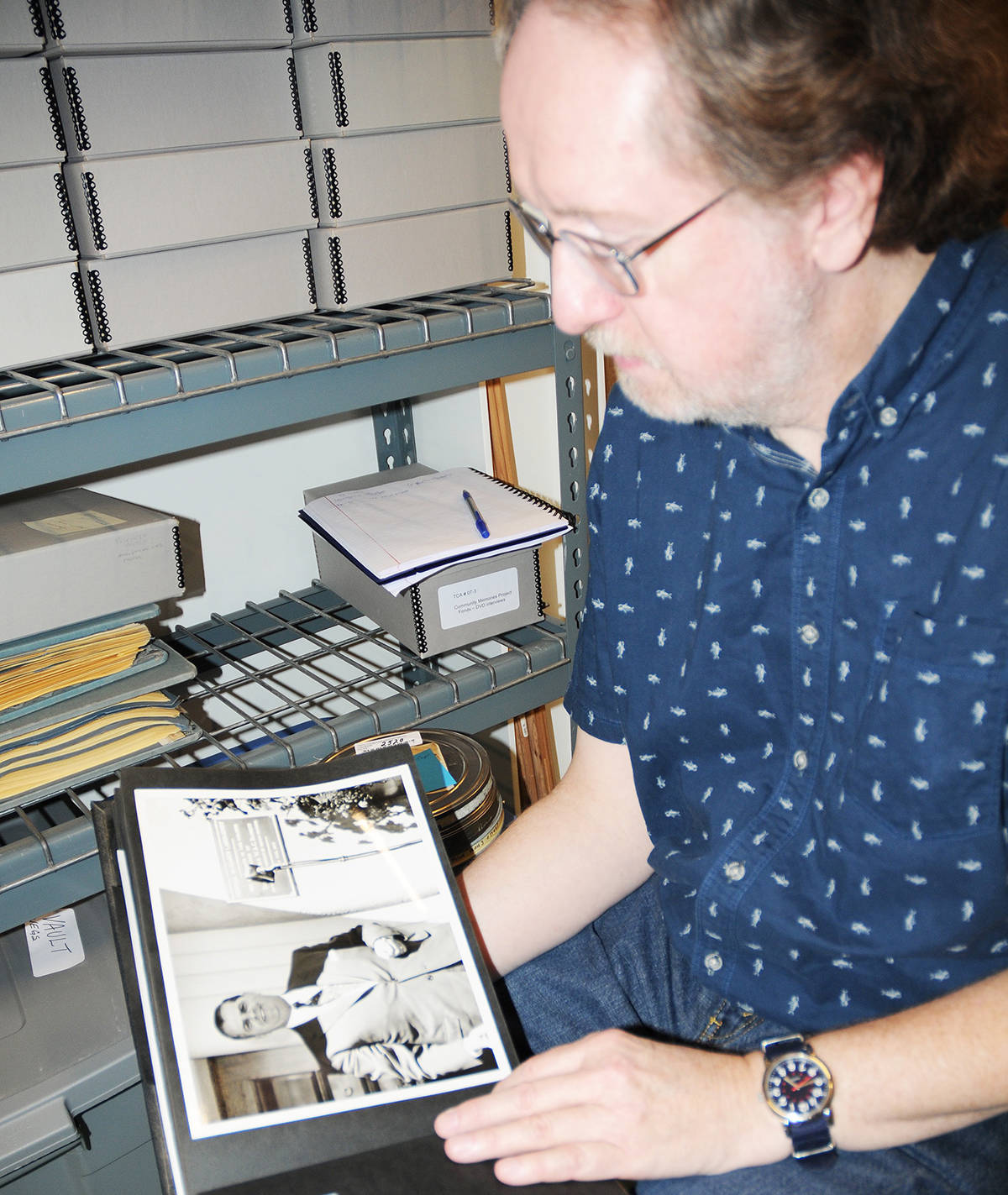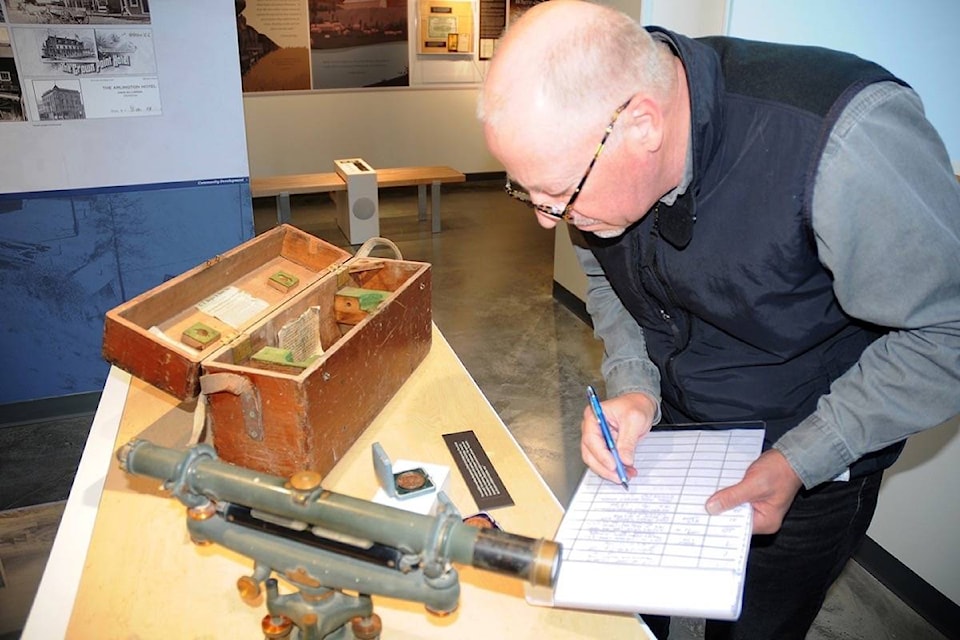As with any new asset - like the Trail Museum and Archives - comes the need to place value, for insurance purposes, on contents within.
But how does one place a monetary figure on artifacts that are priceless and irreplaceable in Silver City history?
That is what two appraisers from Toronto were tasked with last week as they combed through vast collections housed in the Trail Riverfront Centre or quietly tucked away at city hall, and those on display in the arena’s Sports Hall of Memories.
The last professional appraisal was in 2004, when the collective was smaller and valued under $200,000.
So it was time for a re-visit, though a final report is not expected until the new year.
This was Stephen Sweeting’s first visit to Trail. His focus of evaluation was the museum and sports collections, but it was the latter that gave him much food for thought.
“The extend of the focus on sports, in Trail, is new to me,” he said. “Most cities don’t have this sort of focus and attention, and to be honest with you, they don’t seem to have this sort of talent either, which is remarkable.
“So I am trying to wrap my head around how such a small community has been such a powerhouse,” Sweeting added.
“That, to me, adds a whole different dimension to it. And all the attention that has been paid to assembling things over time, people keeping artifacts and making sure they get into an institution like this, it’s very important.”
As far as placing a dollar value on any historical antiquity, Sweeting says it’s all based on looking at comparable sales.
There’s plenty of websites that target sports memorabilia these days. But how could he, for example, place a price on First Nations artifacts found on the shores of the Columbia River?
Invaluable as far as history, but what about for insurance purposes?
“There are markets where arrowheads and points are bought and sold,” he explained. “So what one would do is look for similar types of properties that have shown up either at auctions or through dealers that have been bought and sold, so there is a sales record.”
From there, adjustments are made to accommodate factors such as condition and rarity of the artifact.
“If it came out of an important collection you might bump it up a little bit,” Sweeting said. “So there is a combination of objective data collection, and then something that is a little more subjective, which tends to be based on the appraiser’s knowledge, experience and sense of how markets might respond to the object.”
He says there are big markets on First Nations artifacts, mostly south of the border.
“Many of the auction houses that seem to specialize in First Nations, what they still call ‘Indian Properties’ in the U.S., are in fact in the U.S.,” he said.
“We have some up here, but not as big a scale as in the United States. I mean they really pay attention to their heritage more than we do, it’s a bit strange.”
The second appraiser was Brock Silversides, head of “Media Commons” at the University of Toronto.
His focus was the museum’s archival collection, and records he describes as “anything non-book.”
Silversides just happens to be researching Frederick Steele, a turn-of-the-century, Canadian photographer. So he was pleasantly surprised with the earliest photographs of Trail - a collection taken by one Frederick Steele.
“There is a lot of criteria (in placing value on archives),” Silversides said. “Mostly it’s the rarity or the uniqueness of the material … also the condition of the material, and a big one is the informational value it has.”
Collections also have to show something, typical grip-and-grins aren’t worth much unless the photo is of a person who is extraordinary in some way.
“You can have albums full of photographs but they have to be showing something,” he explained. “Albums that show something like how a plant or a mine works, are worth a heck of a lot more than head shots, unless the head shots are of people who are incredibly famous or important in their field.”
Rare historical photos aside, there was one collection that left an indelible impression on Silversides.
“One collection that so impressed me is the Trail Times,” he explained, referring to the archives’ collection which dates back to the paper’s first issue on Oct. 19, 1895.
“To have the hard copy,” he said shaking his head incredulously. “It’s fabulous, because for decades now most libraries and archives have been microfilming the newspapers and getting rid of the originals. Microfilm or digitization is good for quick access and research, but you’re never going to get a good reproduction of the printing techniques of tone photographs, you’ll never be able to reproduce that on microfilm,” he added.
“The combination of original photographs and the original newspapers, that is probably one of the best sources of history for any community. That’s the only way to fully understand the bigger currents and the individual local currents - those two together – it’s absolutely wonderful.”
Sarah Benson-Lord, manager of the museum and archives, was thrilled with the reaction to the archival collection, specifically the various photograph collections.
“He was impressed with our newspaper collection, the fact we have kept two original copies, as well as a complete microfilmed set,” Benson-Lord said.
“And the process did reaffirm for us the uniqueness of our sports collection. Both appraisers were surprised with the completeness, for lack of a better word, meaning we are able to represent key sports victories/events/teams/individuals with rare and valuable artifacts,” she said.
“Probably none more important the our collection of 1939, 1961 and 1963 Smoke Eater memorabilia. We have a wonderfully generous community to thank for that.”

